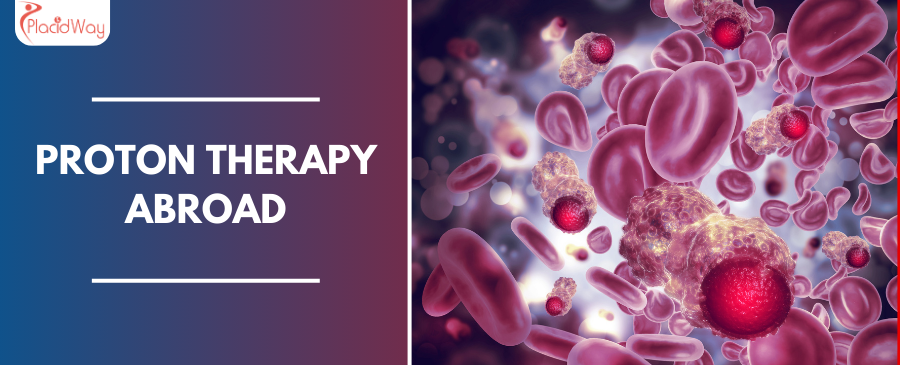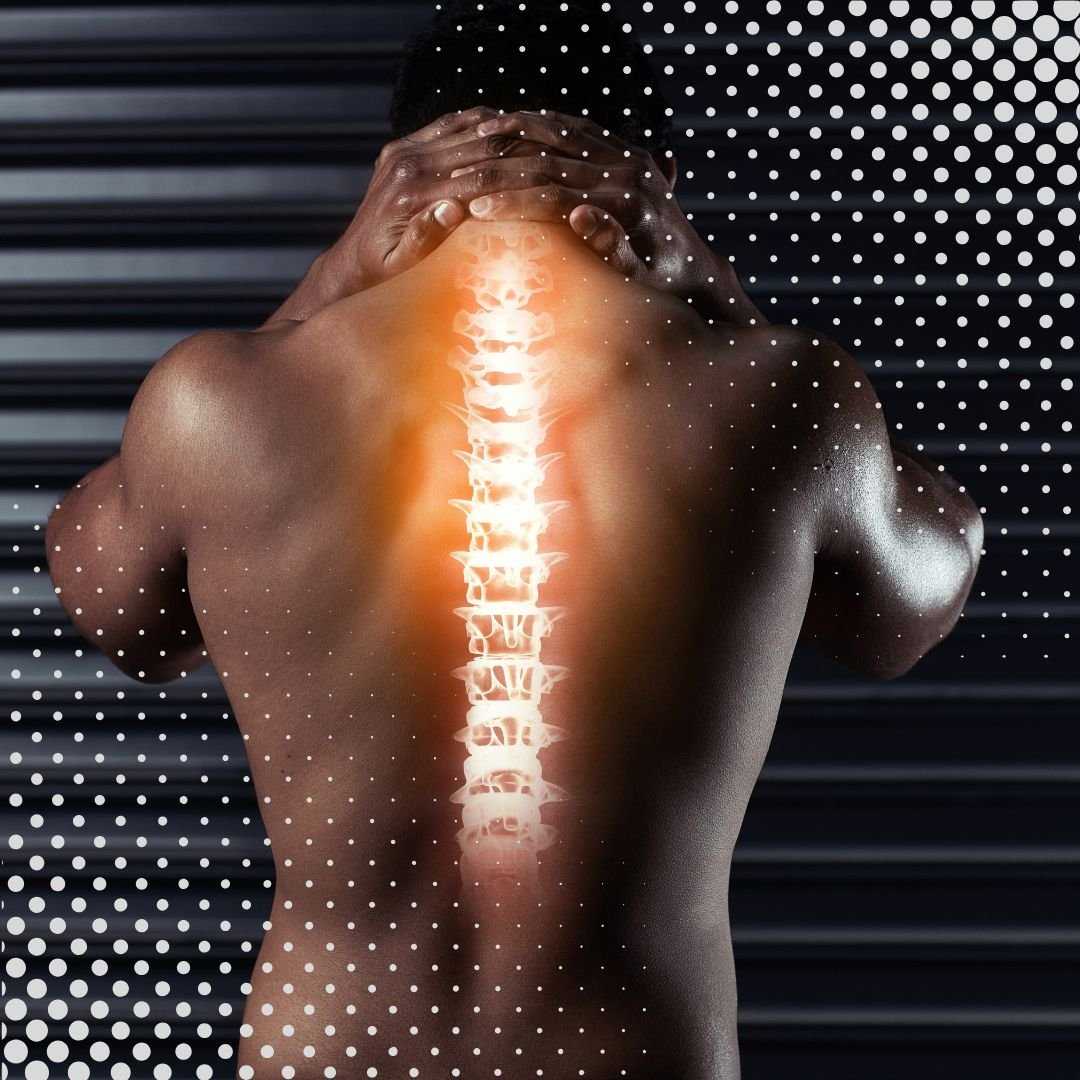
Unlocking Precision Cancer Care: Your Guide to Proton Therapy Abroad
Facing a cancer diagnosis is a challenging journey, and finding the most effective, least invasive treatment is paramount. For many, Proton Therapy represents a beacon of hope—an advanced form of radiation that offers unparalleled precision in targeting tumors while sparing healthy tissue. This innovative treatment is particularly beneficial for cancers located near vital organs or in sensitive areas, and for pediatric patients, where minimizing long-term side effects is crucial.
As you explore your options, you might be asking: "What is Proton Therapy?" and "Could it be right for me?" Unlike traditional X-ray radiation, which deposits energy along its entire path, protons can be precisely controlled to release most of their energy directly within the tumor, a phenomenon known as the Bragg peak. This unique property allows oncologists to deliver high doses of radiation to cancer cells with exceptional accuracy, reducing the risk of damage to surrounding healthy organs and tissues.
The decision to pursue advanced cancer treatment like Proton Therapy can be complex, especially when considering factors like cost, availability, and expertise. For many patients worldwide, exploring Proton Therapy abroad through medical tourism has become a viable and often superior option. Countries across the globe are home to state-of-the-art proton therapy centers, offering access to cutting-edge technology, experienced specialists, and often, more affordable treatment packages without compromising on quality.
This comprehensive guide aims to demystify Proton Therapy, covering everything from the conditions it treats and how it works, to what you can expect in terms of recovery, risks, and importantly, the immense potential of seeking this life-changing treatment overseas. We'll delve into common questions like "What are the benefits of Proton Therapy?", "How much does Proton Therapy cost internationally?", and "Which countries are best for Proton Therapy medical tourism?"—providing you with the knowledge to make informed decisions for your health journey.
What conditions does Proton Therapy effectively treat?
Proton Therapy is increasingly becoming a preferred treatment option for a wide range of cancers, particularly where preserving the function of nearby critical structures is paramount. Its unique precision makes it suitable for:
- Brain and Spinal Cord Tumors: Minimizing radiation exposure to the brainstem, optic nerves, and other vital neural structures, reducing risks of cognitive decline, vision loss, or paralysis.
- Pediatric Cancers: Children are especially vulnerable to the long-term side effects of radiation, making Proton Therapy an excellent choice for brain tumors, sarcomas, medulloblastoma, and other childhood cancers. It significantly lowers the risk of secondary cancers and developmental issues.
- Prostate Cancer: Offering precise targeting of the prostate gland, reducing radiation dose to the bladder and rectum, thereby lowering the risk of urinary and bowel side effects.
- Head and Neck Cancers: Protecting structures like the salivary glands, esophagus, and larynx, which can impact swallowing, speech, and taste.
- Lung Cancer: Minimizing radiation to healthy lung tissue, heart, and esophagus, which is crucial for patients with pre-existing lung conditions.
- Liver Cancer: Delivering targeted radiation while protecting the remaining healthy liver tissue, vital for liver function.
- Eye Cancers (Ocular Melanoma): Precisely treating the tumor while preserving vision in the affected eye and protecting the optic nerve.
- Breast Cancer: For select cases, it can reduce radiation exposure to the heart and lungs.
- Recurrent Cancers: Can be used for tumors that have recurred in an area previously treated with radiation, where further conventional radiation might be too risky.
Patients often search for "Proton therapy for brain tumor," "Proton therapy for prostate cancer," or "pediatric cancer proton treatment" to understand its specific applications.
What causes the cancers that Proton Therapy targets?
While Proton Therapy is a treatment modality, it's important to understand that the cancers it targets arise from various complex factors. The underlying causes and risk factors for these cancers are consistent, whether treated with protons or other methods:
- Genetic Predisposition: Some cancers, especially certain pediatric brain tumors (e.g., medulloblastoma), sarcomas, and breast cancers, can have a strong genetic component. Inherited mutations (like BRCA for breast cancer) increase risk.
- Environmental Factors:
- Smoking/Tobacco Use: A primary risk factor for lung cancer and head and neck cancers.
- Alcohol Consumption: Linked to increased risk of head and neck and liver cancers.
- Exposure to Carcinogens: Certain chemicals, industrial pollutants, and asbestos can contribute to lung and other cancers.
- Radiation Exposure: High doses of radiation (e.g., from previous cancer treatments or occupational exposure) can increase the risk of secondary cancers.
- Viral Infections:
- HPV (Human Papillomavirus): A significant cause of certain head and neck cancers.
- Hepatitis B & C: Major risk factors for liver cancer.
- Age: The risk of many cancers, including prostate cancer, increases significantly with age.
- Lifestyle Factors: Obesity, poor diet, and lack of physical activity contribute to a higher risk of various cancers.
Patients often inquire about "causes of brain tumors," "prostate cancer risk factors," or "what causes lung cancer" to better understand their diagnosis and treatment options.
How does Proton Therapy work differently than traditional radiation?
The fundamental difference between Proton Therapy and traditional X-ray (photon) radiation lies in how they interact with tissue. Imagine painting a wall:
- Traditional X-ray Radiation (Photons): These are like spray paint. They start strong, depositing a significant dose of radiation at the surface, and continue to deposit energy as they pass through the body, eventually exiting on the other side. This means both the tumor and healthy tissue before and beyond the tumor receive radiation, leading to a wider field of potential side effects.
- Proton Therapy (Protons): These are like a precise paintbrush. Protons can be controlled to travel through the body with minimal energy loss until they reach a specific depth, where they unleash a powerful burst of radiation called the "Bragg peak." After this peak, the protons stop, depositing virtually no radiation beyond the tumor. This allows for unparalleled precision, maximizing the dose to the tumor while dramatically reducing damage to healthy organs and tissues.
Key advantages of this precision include:
- Reduced Side Effects: Less radiation to healthy tissues means fewer short-term and long-term side effects.
- Higher Doses: The ability to deliver higher, more effective radiation doses to the tumor.
- Lower Risk of Secondary Cancers: Especially crucial for children, as less healthy tissue is irradiated.
Patients often search for "proton vs photon radiation," "Bragg peak explanation," or "benefits of proton therapy over traditional radiation" to understand this critical distinction.
Who is an ideal candidate for Proton Therapy treatment?
While Proton Therapy offers significant advantages, it's not universally suitable for every cancer. The ideal candidate typically meets specific criteria:
- Tumor Location: Cancers located in close proximity to vital organs (e.g., brain, spinal cord, heart, eyes, bladder, rectum).
- Pediatric Patients: Children and adolescents with various cancers are often strong candidates due to their developing bodies' sensitivity to radiation and the desire to minimize long-term developmental and health risks.
- Head and Neck Cancers: To preserve speech, swallowing, and salivary gland function.
- Prostate Cancer: Patients seeking to reduce urinary, bowel, and sexual side effects.
- Liver Cancer: To spare healthy liver tissue in a dose-sensitive organ.
- Recurrent Cancers: When a tumor returns in an area previously treated with radiation, and further conventional radiation would be too dangerous.
- Patients with specific medical conditions: Those with pre-existing conditions that make them more susceptible to conventional radiation side effects (e.g., pre-existing heart or lung disease).
The decision for Proton Therapy is made after a thorough evaluation by a multidisciplinary team, including radiation oncologists, medical oncologists, and surgeons. They consider the type, size, and stage of cancer, as well as the patient's overall health and treatment goals. Patients frequently ask "who is a candidate for proton therapy?" or "eligibility for proton beam therapy."
What are the recovery expectations and typical timeline after Proton Therapy?
One of the significant advantages of Proton Therapy is its generally more manageable recovery profile compared to conventional radiation. While it's still an intensive treatment, the reduced collateral damage to healthy tissues often translates to fewer and less severe side effects, allowing patients to maintain a better quality of life during and after treatment.
- During Treatment (4-8 weeks, 5 days/week):
- Fatigue: This is the most common side effect, often cumulative over the weeks. Patients are encouraged to rest but also engage in light activity.
- Skin Irritation: Mild redness, dryness, or sensitivity in the treated area, similar to a sunburn, managed with topical creams.
- Localized Side Effects: Depending on the treated area, patients might experience temporary hair loss, sore throat (head/neck), or mild digestive issues (pelvic/abdominal).
- Immediately After Treatment:
- Side effects typically peak towards the end of treatment and may persist for a few weeks afterward.
- Most patients can resume normal activities, including work or school, relatively quickly.
- Long-Term Recovery:
- Side effects gradually subside over weeks to months.
- Regular follow-up appointments with the oncology team are crucial to monitor recovery, assess treatment effectiveness, and manage any lingering or late-onset side effects (which are less common and less severe with protons).
- Patients, especially children, report fewer long-term developmental and functional impairments.
Understanding "Proton therapy recovery time" and "what to expect during proton therapy" is vital for planning and setting realistic expectations.
What are the potential risks and side effects of Proton Therapy?
Even with its advanced precision, Proton Therapy is still a powerful medical treatment, and some risks and side effects are possible. The key difference is that these are often localized, less severe, and less frequent compared to conventional X-ray radiation due to the minimal dose to healthy tissues.
- Common Short-Term Side Effects (during and immediately after treatment):
- Fatigue: The most common, often manageable with rest.
- Skin Reactions: Redness, dryness, itching, or blistering in the treated area, similar to a sunburn.
- Hair Loss: If the treatment area includes hair-bearing skin.
- Nausea/Loss of Appetite: More common with abdominal or pelvic treatments.
- Pain/Discomfort: Mild pain or soreness in the treated area.
- Swelling: In the treated region.
- Specific to Site:
- Head/Neck: Sore throat, difficulty swallowing, mouth sores, taste changes.
- Brain: Headaches, temporary cognitive changes.
- Pelvis (Prostate/Rectal): Urinary frequency/urgency, bowel changes.
- Less Common Long-Term Side Effects:
- While greatly reduced compared to traditional radiation, late side effects can occur, but are less severe. These might include subtle tissue changes, nerve damage, or persistent dryness in mucous membranes.
- Secondary Cancers: The risk of developing a new cancer due to radiation exposure is significantly lower with Proton Therapy than with traditional radiation, especially in pediatric patients. This is a major long-term benefit.
It's important to discuss "proton therapy side effects" and "risks of proton beam therapy" with your medical team to understand potential impacts specific to your condition and treatment plan.
How does the cost of Proton Therapy vary across different countries?
For many patients, the cost of Proton Therapy is a major consideration. While its clinical benefits are clear, the financial burden can be substantial, especially in countries where healthcare costs are exceptionally high. This disparity in pricing is a primary driver for patients seeking Proton Therapy abroad.
Here’s a general comparison of Proton Therapy costs in various countries (these are estimates and can vary based on the specific cancer, number of treatment fractions, clinic, and additional services):
| Country | Estimated Cost Range (USD) | Notes |
|---|---|---|
| USA | $100,000 - $250,000+ | Highest costs, often requires extensive insurance navigation. |
| Germany | $35,000 - $95,000 | High quality, well-regarded medical system, often includes accommodation assistance. |
| Czech Republic | $30,000 - $50,000 | Known for cutting-edge facilities and significantly lower costs. |
| South Korea | $50,000 - $80,000 | Advanced technology, excellent medical infrastructure, competitive pricing. |
| Switzerland | $75,000 - $160,000 | High quality and innovative centers, but costs can still be substantial. |
These figures highlight why "affordable proton therapy" and "proton therapy cost abroad" are frequent search terms for patients exploring global options.
Why consider traveling abroad for Proton Therapy?
The decision to seek medical treatment abroad is a deeply personal one, but for Proton Therapy, the benefits often outweigh the logistical considerations:
- Significant Cost Savings: As highlighted in the cost comparison, the financial difference can be enormous, making advanced care accessible to those who might otherwise be unable to afford it.
- Access to Advanced Technology and Expertise: Many countries have invested heavily in state-of-the-art proton therapy centers, boasting the latest generation of equipment and highly skilled specialists, sometimes with more experience in specific tumor types than available locally.
- Shorter Wait Times: In some countries, waitlists for Proton Therapy can be long. Abroad, patients often experience faster access to treatment, which is critical for cancer care.
- Comprehensive Care Packages: Many international clinics and medical tourism facilitators (like PlacidWay) offer all-inclusive packages that cover not just the treatment, but also accommodation, translation, local transport, and patient support.
- Privacy and Anonymity: Some patients prefer the discretion that comes with receiving treatment away from their home country.
- Tourist Experience: Depending on the destination, patients and their families can combine treatment with cultural experiences, making a challenging time a little more enriching.
Patients often search for "Proton therapy medical tourism," "benefits of overseas cancer treatment," or "affordable proton treatment options."
Which international destinations offer high-quality Proton Therapy at a good value?
When seeking high-quality Proton Therapy abroad without the exorbitant costs, several countries consistently stand out:
- Czech Republic: Home to the Proton Therapy Center in Prague, a leading facility renowned for its cutting-edge technology (pencil beam scanning) and highly experienced medical staff. It offers some of the most competitive prices globally without compromising on quality or patient care.
- Germany: A pioneer in medical innovation, Germany boasts several advanced proton therapy centers. Its healthcare system is highly regulated, ensuring top-tier quality, and while more expensive than Eastern Europe, it remains significantly more affordable than the US.
- South Korea: Known for its rapid adoption of advanced medical technologies and highly efficient healthcare system. South Korean proton centers are equipped with the latest machines and staffed by internationally trained specialists, offering excellent outcomes and competitive pricing.
- Japan: While sometimes on the higher end of Asian pricing, Japan's medical technology and expertise are unparalleled. It offers highly advanced proton therapy centers with a strong focus on research and development.
- Poland/Austria: Also emerging as strong contenders with modern facilities and competitive pricing, providing more options for European-bound patients.
When researching, patients often look for "best countries for proton therapy," "affordable proton therapy Europe," or "proton therapy centers abroad reviews."
What should I expect when traveling for Proton Therapy overseas, and how can I ensure quality?
Embarking on a medical journey abroad for Proton Therapy involves careful planning, but with the right support, it can be a smooth and rewarding experience. Here's what to expect and how to ensure you receive high-quality care:
What to Expect:
- Pre-Travel Consultation: Most reputable international centers will require you to send your medical records (scans, biopsy reports, treatment history) for a remote consultation to determine eligibility and propose a treatment plan.
- Travel and Accommodation: Treatment typically lasts 4-8 weeks, so you'll need to arrange for extended stay accommodation. Many centers or medical tourism facilitators offer assistance with visas, flights, and comfortable, long-term accommodation options, often close to the clinic.
- Language and Cultural Support: Major international clinics are equipped with multilingual staff and offer translation services for appointments and daily needs.
- Local Transportation: Centers often provide shuttle services or help arrange daily transport to and from the clinic for your treatment sessions.
- Emotional Support: Traveling for cancer treatment can be stressful. Many clinics offer patient support groups or counseling services.
How to Ensure Safety and Quality Abroad:
- Accreditation: Look for international accreditations like Joint Commission International (JCI). This signifies that the facility meets rigorous international standards for patient care and safety.
- Doctor Credentials: Verify the qualifications, experience, and specialization of the radiation oncologists. Are they board-certified? Do they have extensive experience with Proton Therapy for your specific cancer type?
- Technology: Ensure the center uses the latest Proton Therapy technology, such as pencil beam scanning, which offers the highest precision.
- Patient Testimonials & Reviews: Seek out real patient experiences and reviews from independent sources.
- Medical Tourism Facilitators: Partner with a trusted platform like PlacidWay. We specialize in connecting patients with accredited, high-quality international clinics. We handle the complexities of vetting facilities, coordinating logistics, and ensuring transparency, allowing you to focus on your health.
- Transparency: Ensure the clinic provides a clear, detailed breakdown of costs, including all aspects of treatment and any potential hidden fees.
Searching for "medical travel for cancer treatment," "international cancer treatment quality," or "how to choose a proton therapy center abroad" will provide useful insights for your journey.
Take the Next Step with PlacidWay
Ready to explore treatment options abroad? Discover top clinics, compare prices, and get a free quote tailored to your needs with PlacidWay.
Cancer Treatment Abroad, Breast Cancer, Lung Cancer





.png)
.png)



Share this listing